Abstract
Thirteen master pigeons were exposed to multiple schedules in which reinforcement frequency (Experiment I) or duration (Experiment II) was varied. In Phases 1 and 3 of Experiment I, the values of the first and second components' random-interval schedules were 33 and 99 seconds, respectively. In Phase 2, these values were 99 seconds for both components. In Experiment II, a random-interval 33-second schedule was associated with each component. During Phases 1 and 3, the first and second components had hopper durations of 7.5 and 2.5 seconds respectively. During Phase 2, both components' hopper durations were 2.5 seconds. In each experiment, positive contrast obtained for about half the master subjects. The rest showed a rate increase in both components (positive induction). Each master subject's key colors and reinforcers were synchronously presented on a response-independent basis to a yoked control. Richer component key-pecking occurred during each experiment's Phases 1 and 3 among half these subjects. However, none responded during the contrast condition (unchanged component of each experiment's Phase 2). From this it is inferred that autoshaping did not contribute to the contrast and induction findings among master birds. Little evidence of local contrast (highest rate at beginning of richer component) was found in any subject. These data show that (a) contrast can occur independently from autoshaping, (b) contrast assays during equal-valued components may produce induction, (c) local contrast in multiple schedules often does not occur, and (d) differential hopper durations can produce autoshaping and contrast.
Keywords: positive contrast, autoshaping, multiple schedules, local contrast, positive induction, rate of reinforcement, duration of reinforcement, key peck, pigeons
Full text
PDF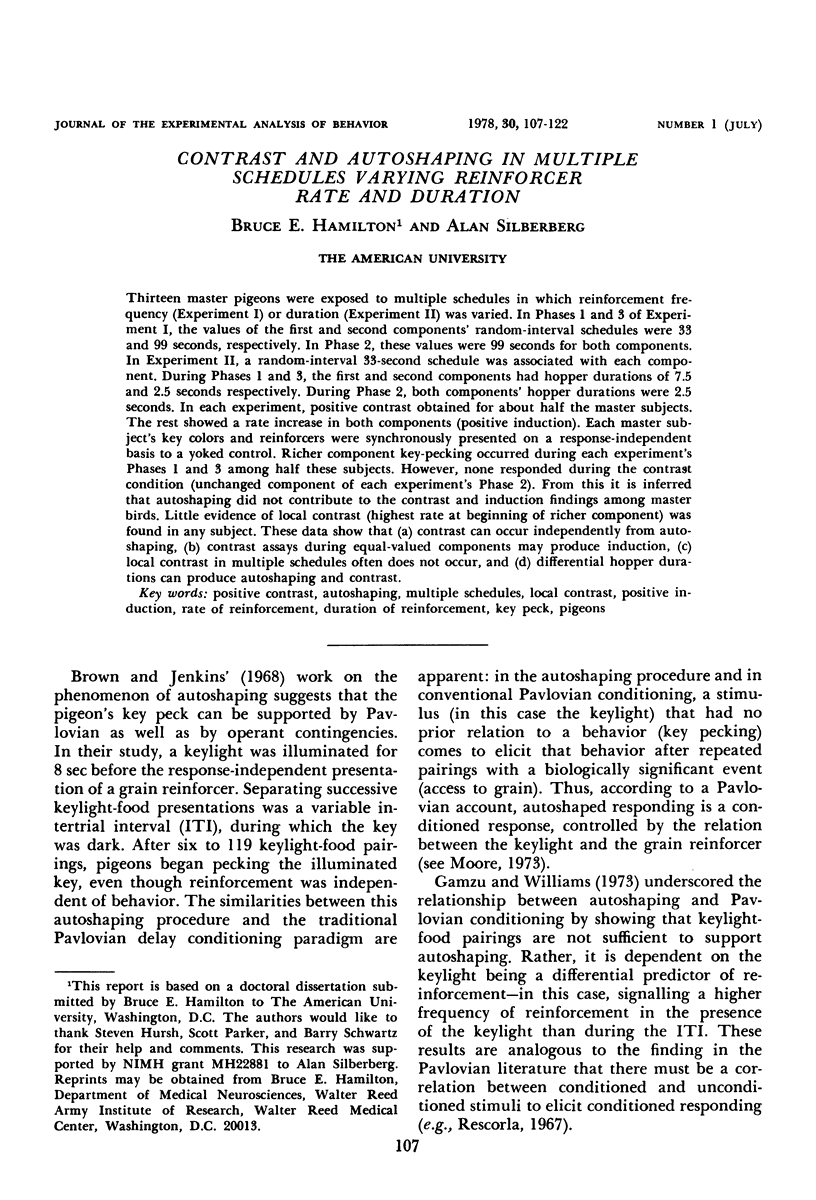
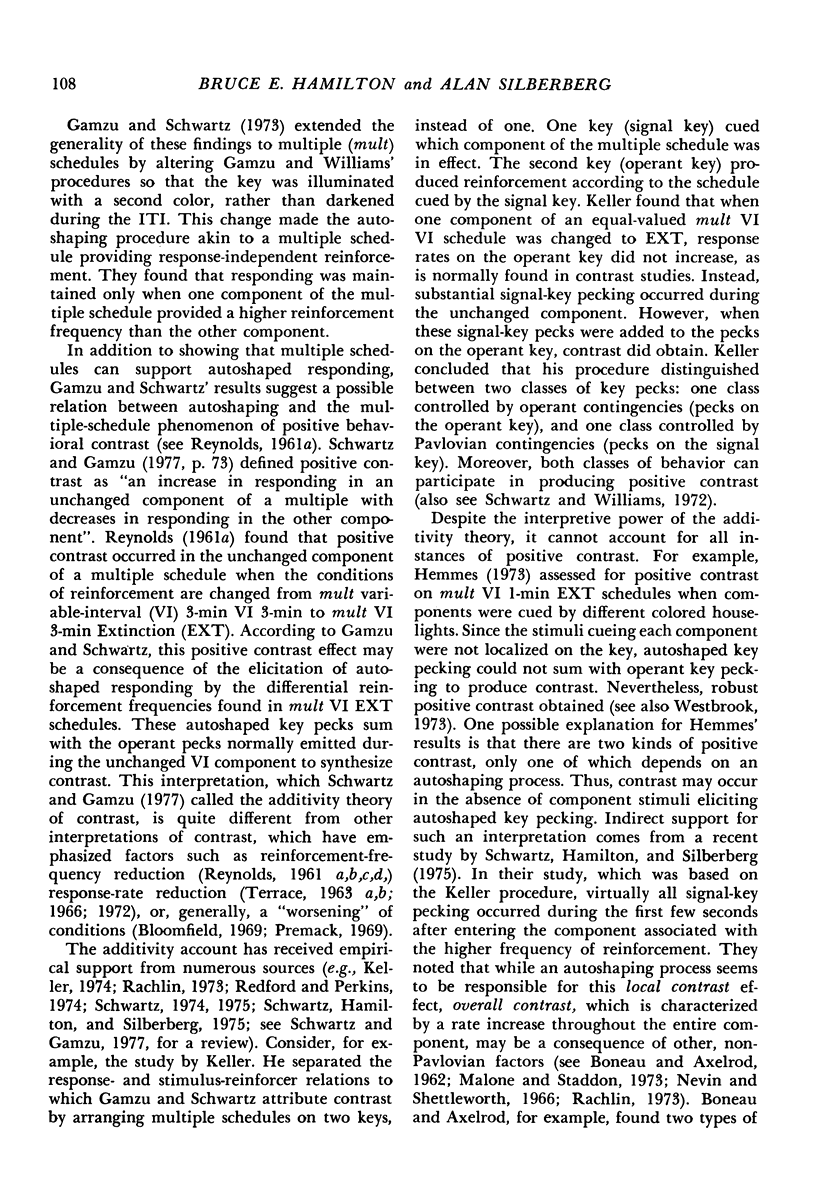
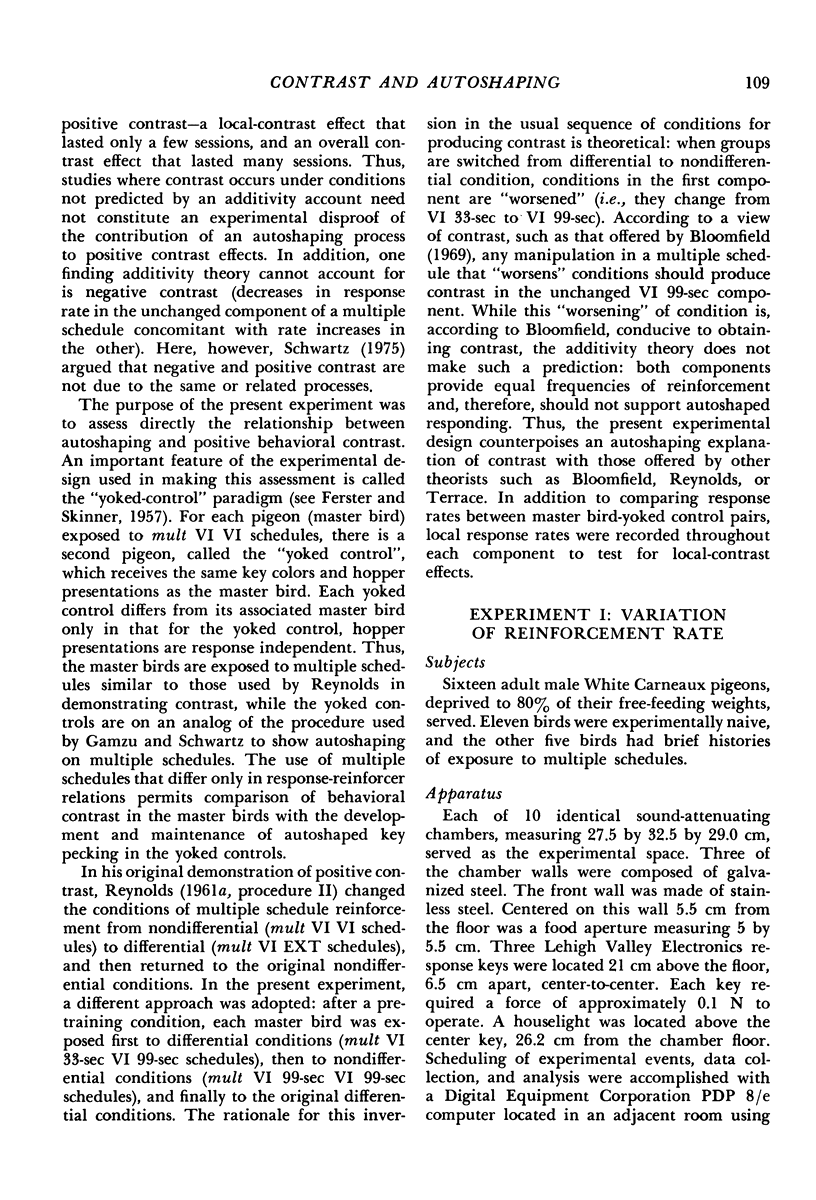
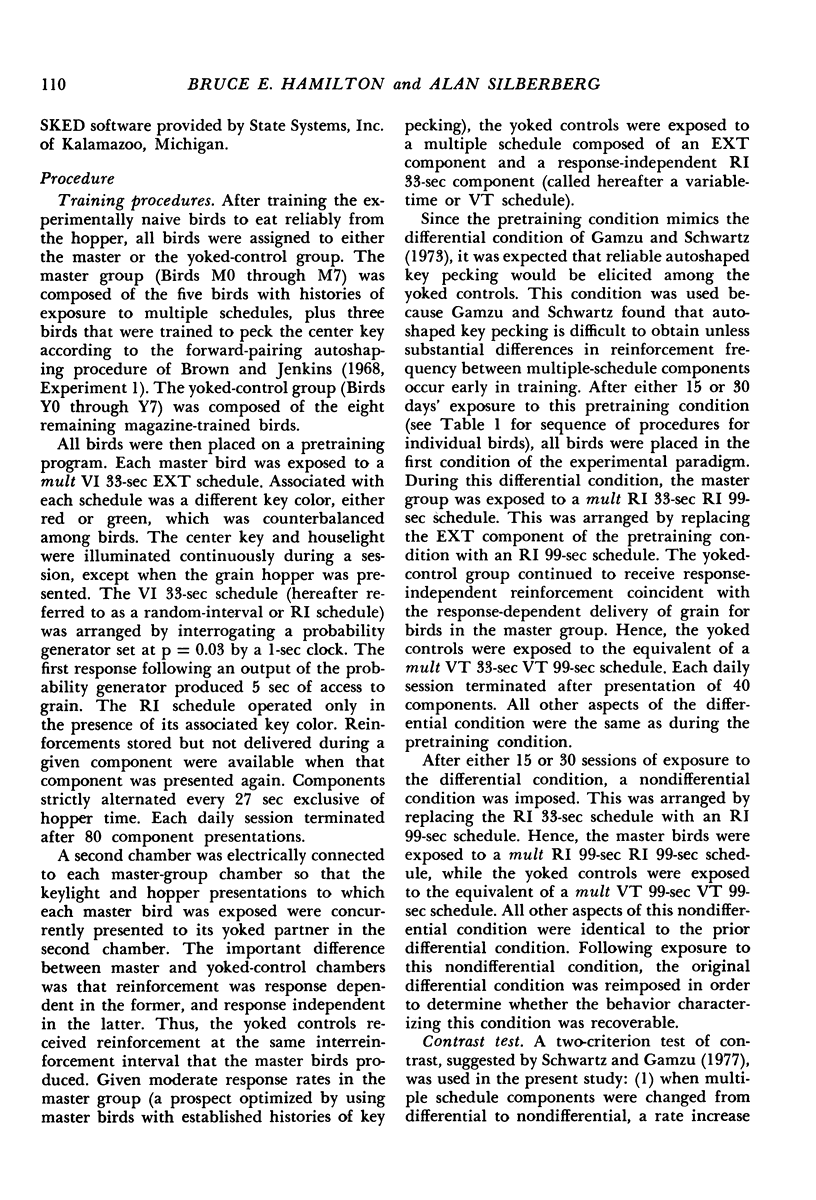
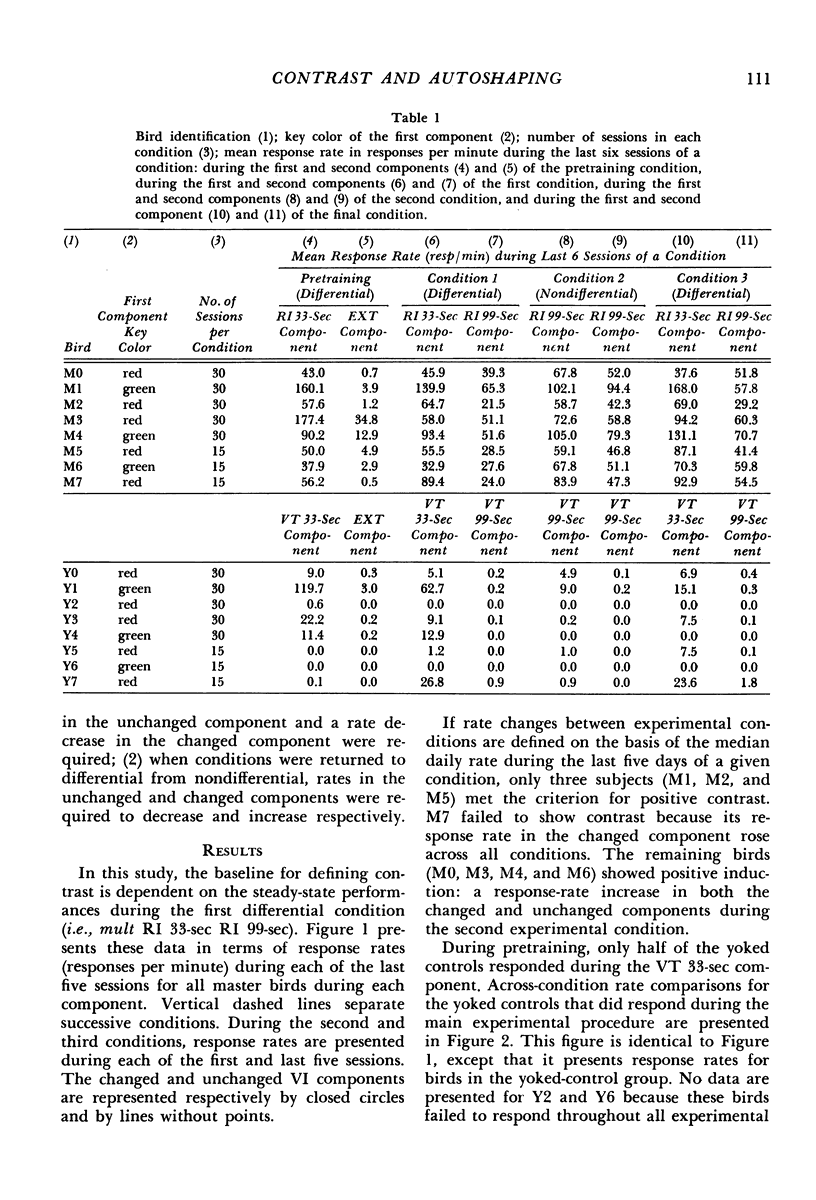
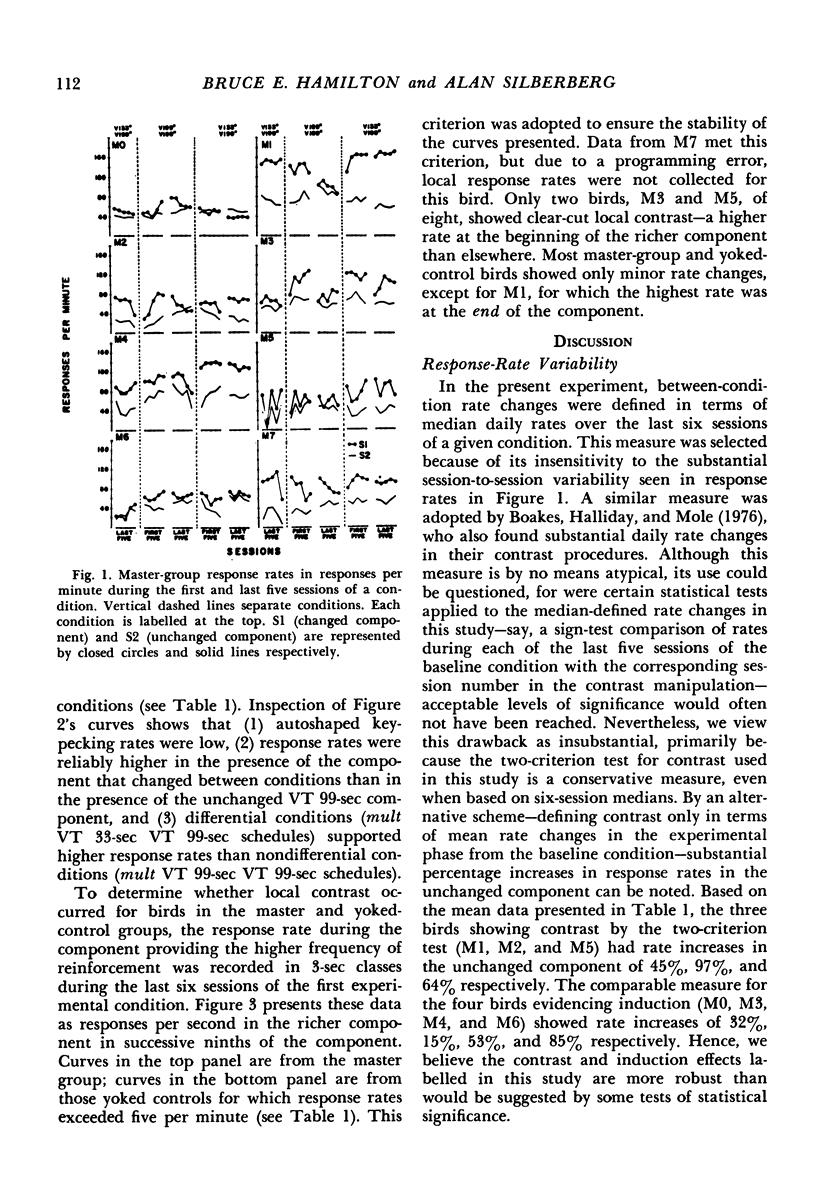
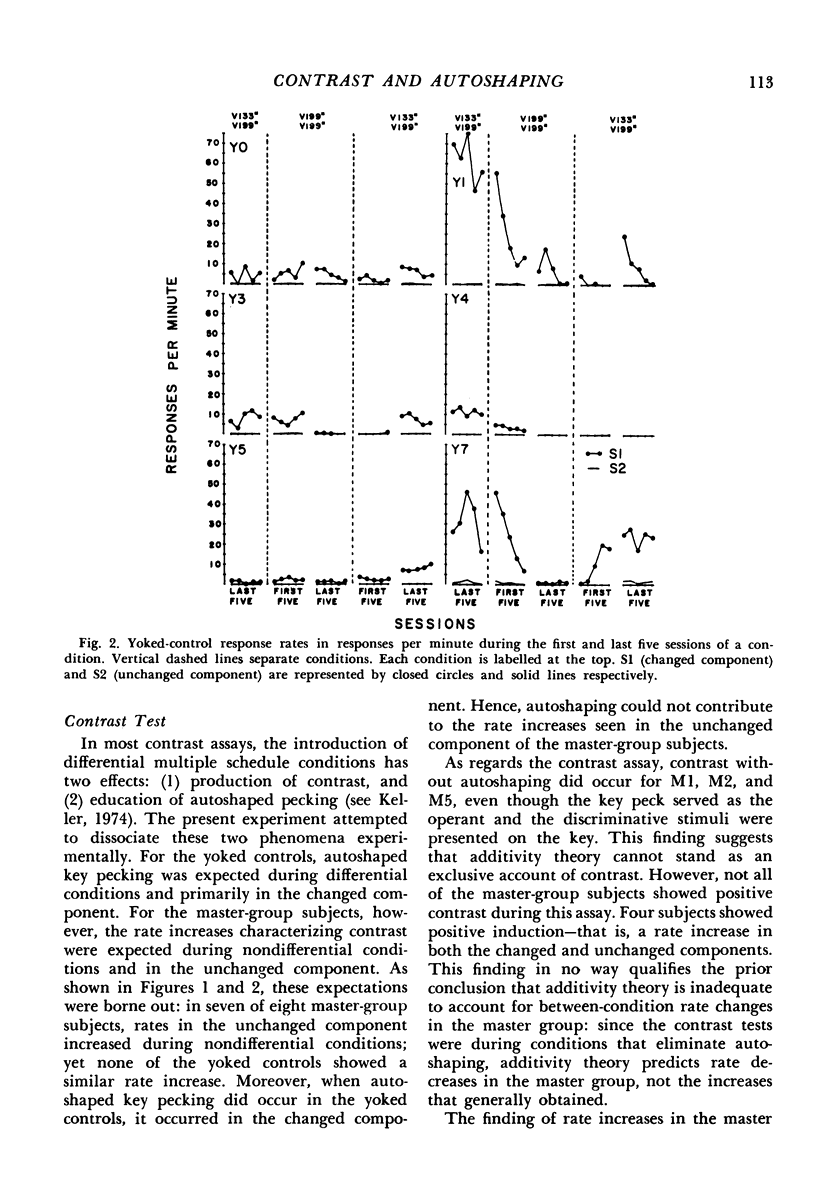
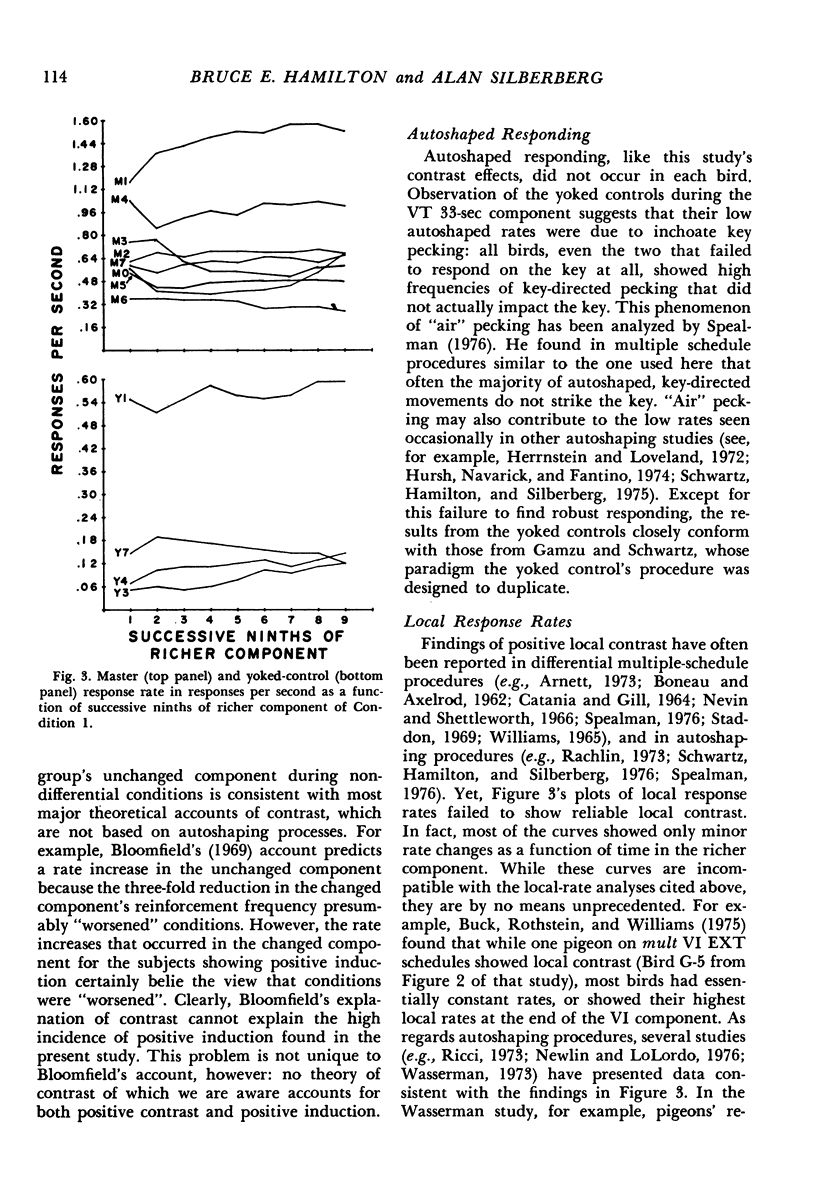
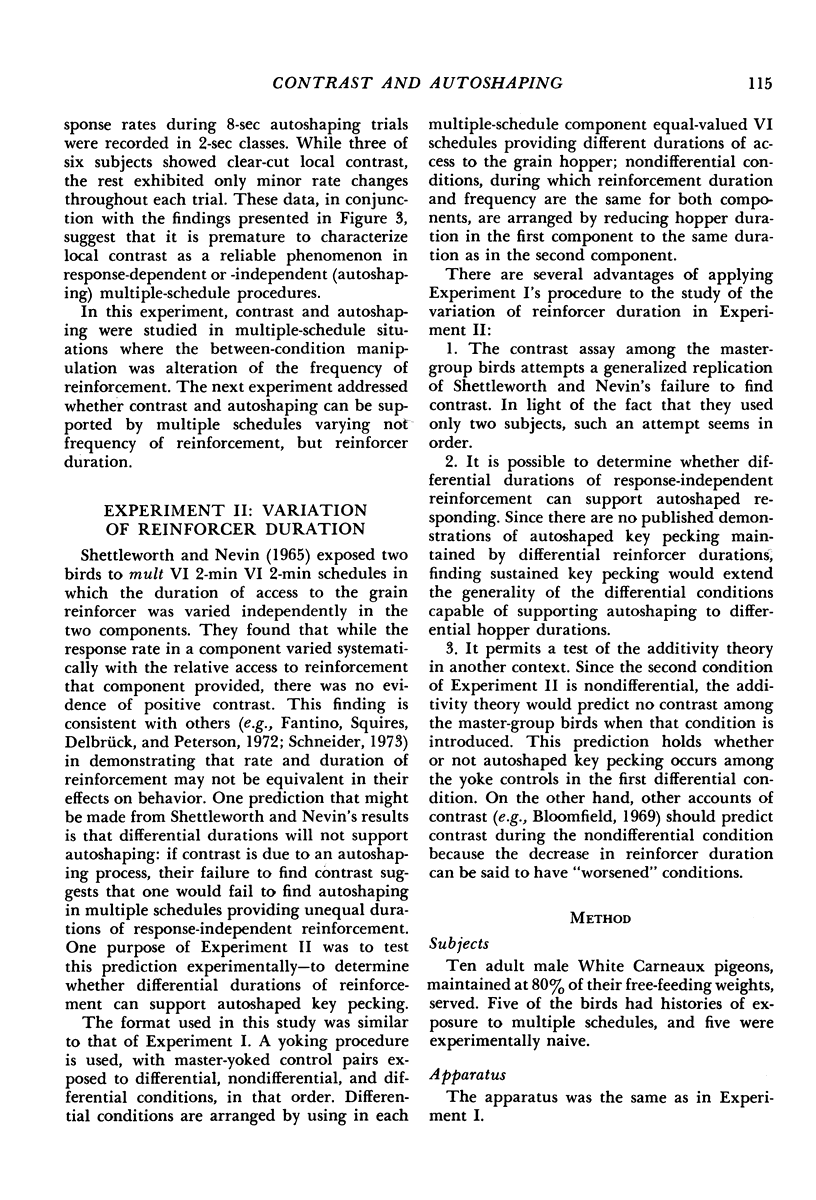
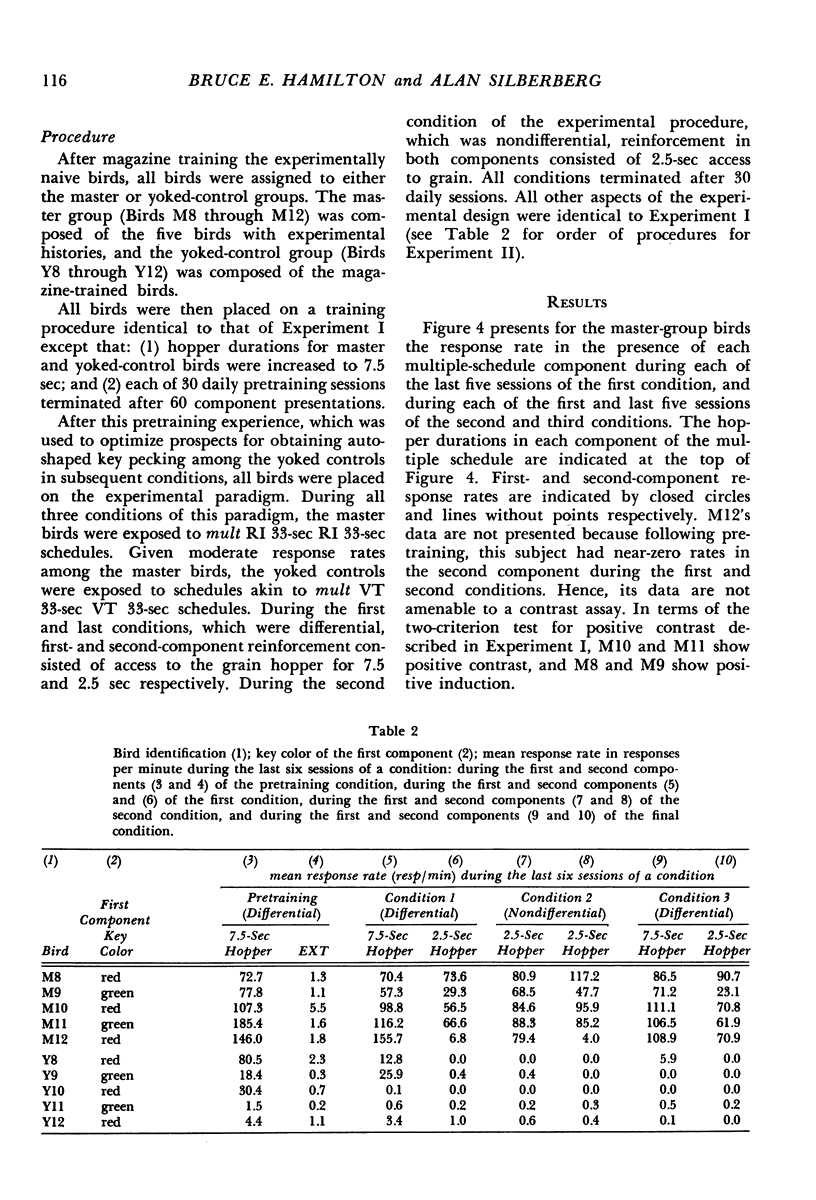
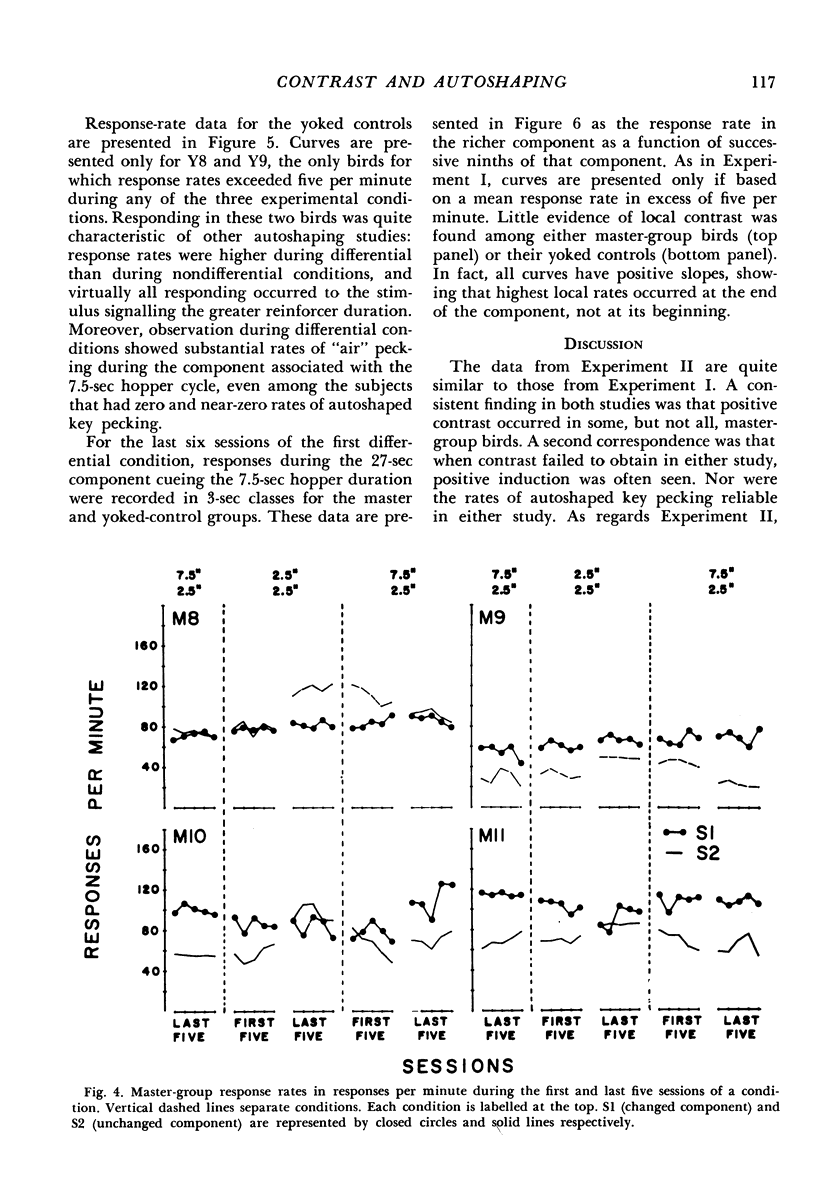
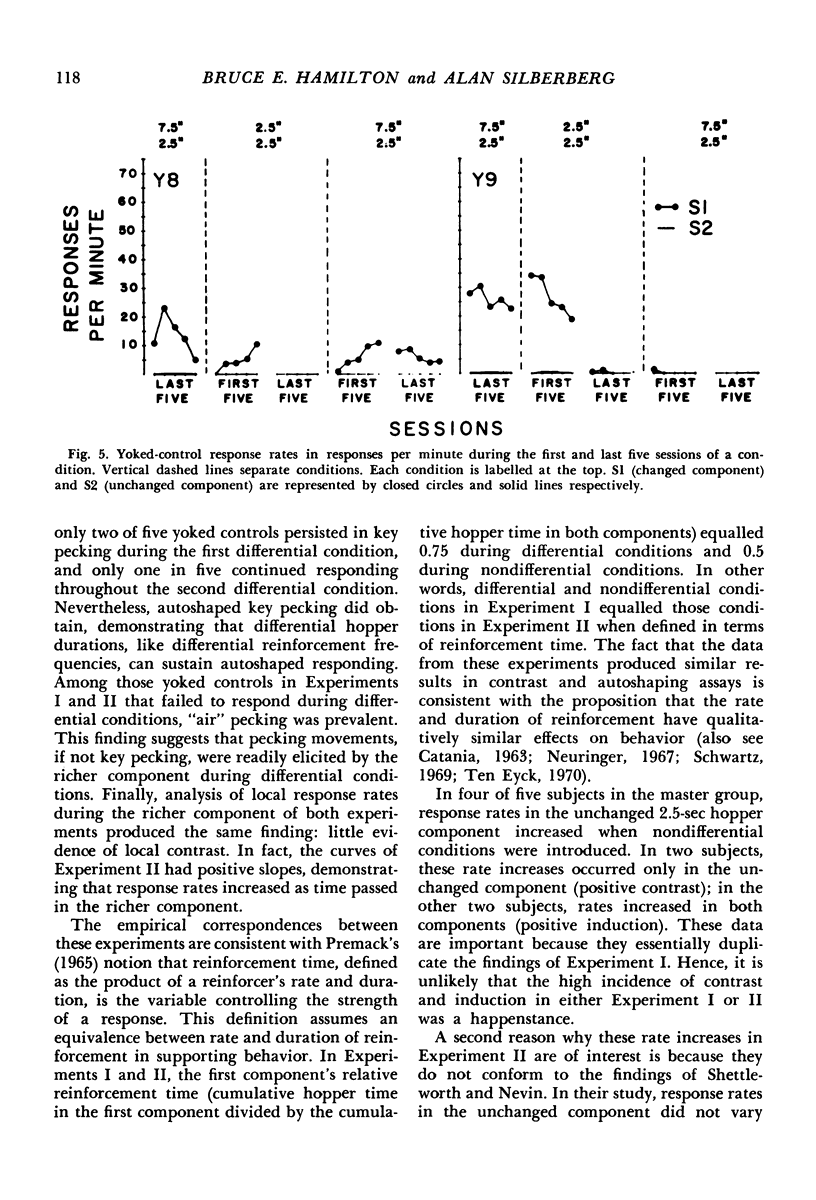
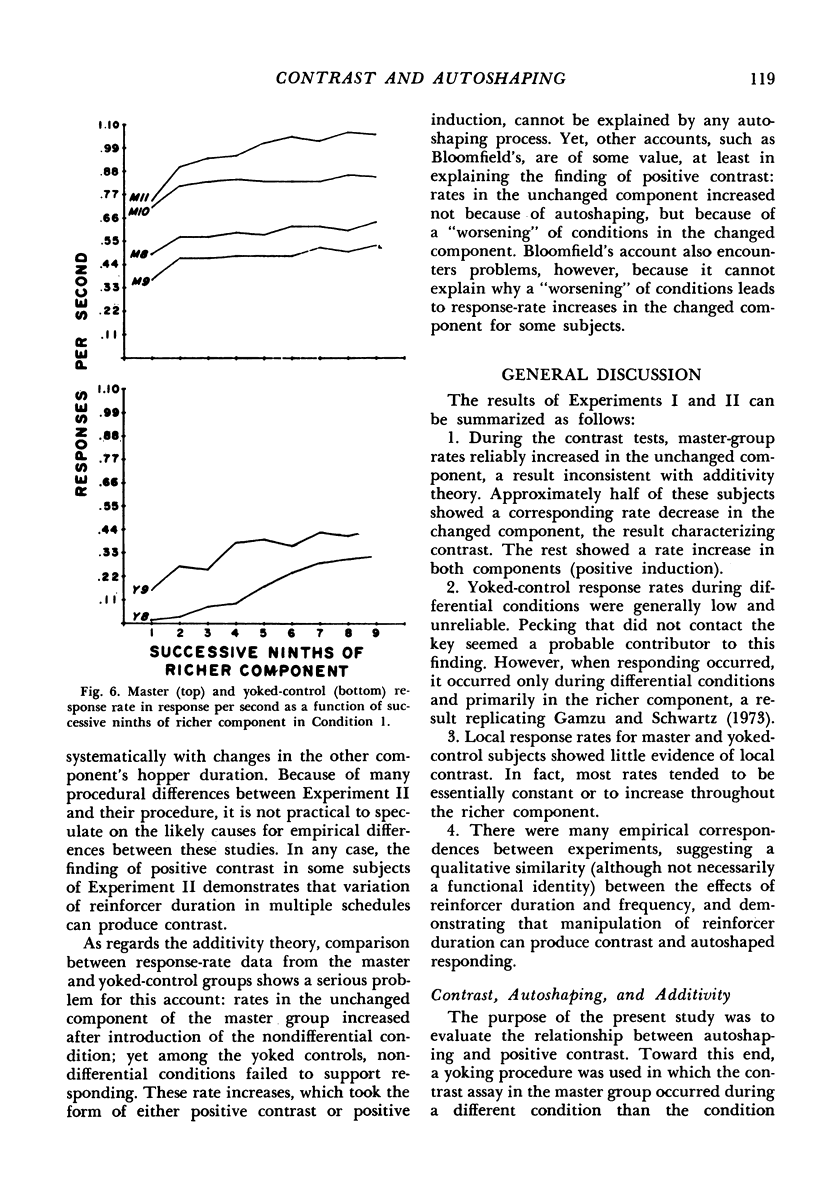
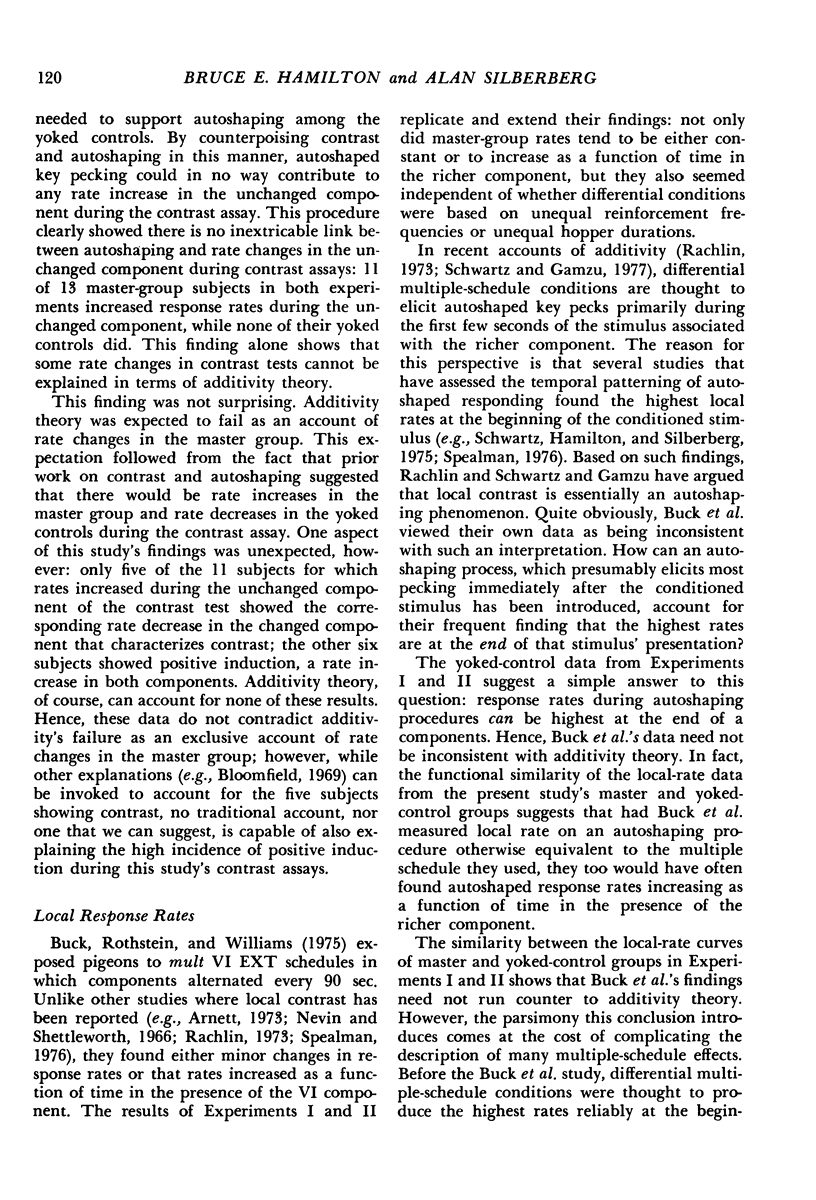
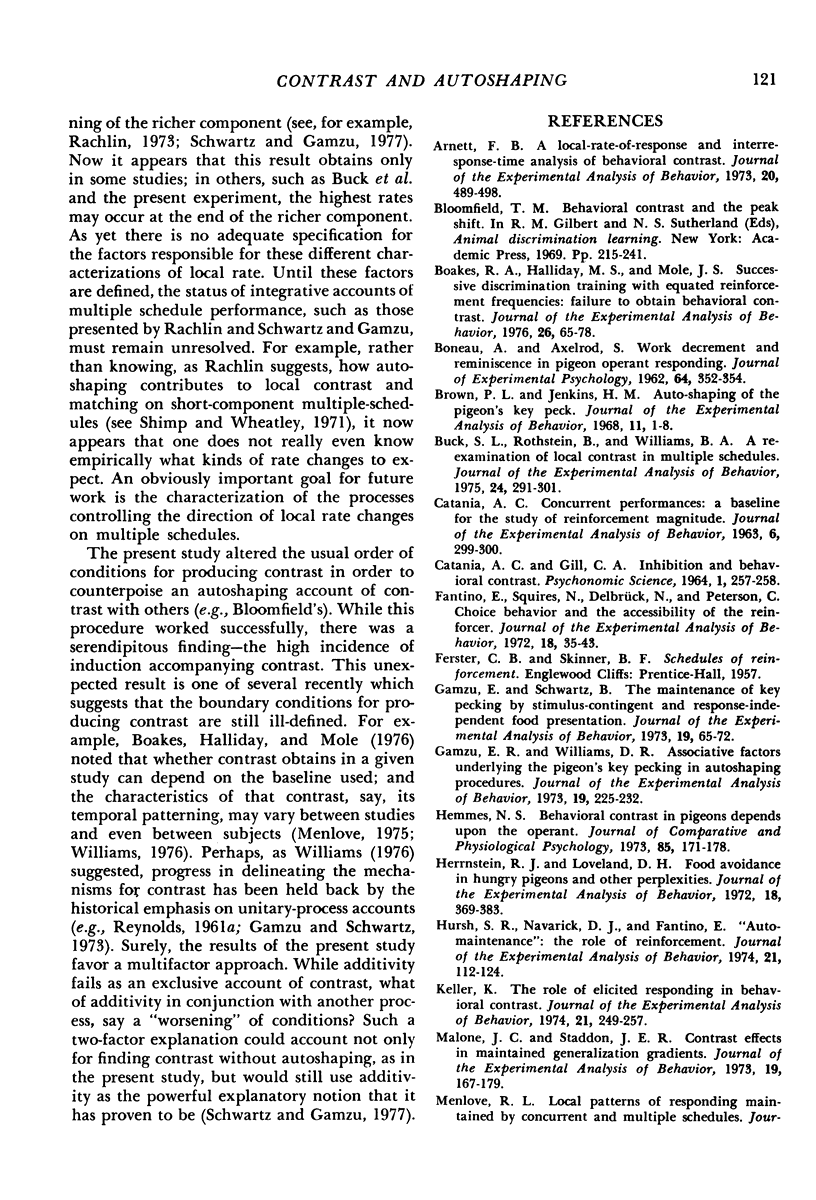
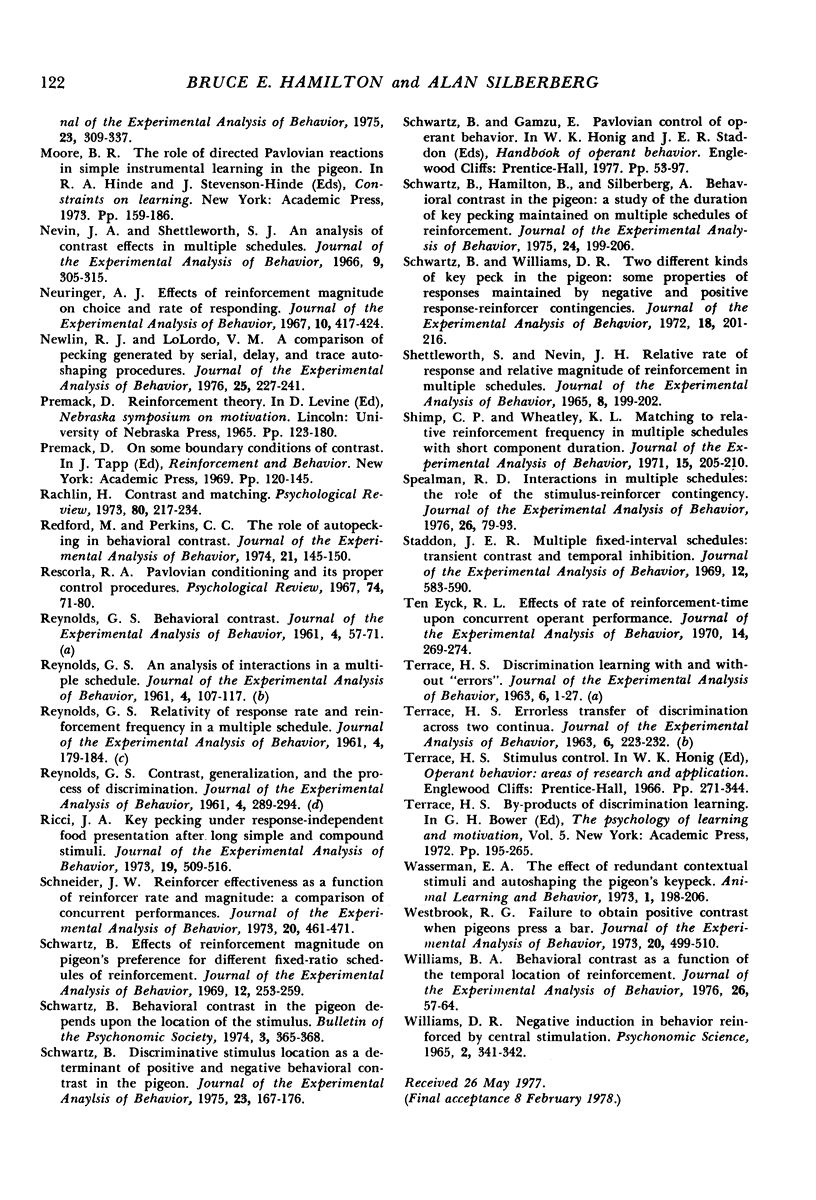
Selected References
These references are in PubMed. This may not be the complete list of references from this article.
- Arnett F. B. A local-rate-of-response and interresponse-time analysis of behavioral contrast. J Exp Anal Behav. 1973 Nov;20(3):489–498. doi: 10.1901/jeab.1973.20-489. [DOI] [PMC free article] [PubMed] [Google Scholar]
- BONEAU C. A., AXELROD S. Work decrement and reminiscence in pigeon operant responding. J Exp Psychol. 1962 Oct;64:352–354. doi: 10.1037/h0047944. [DOI] [PubMed] [Google Scholar]
- Boakes R. A., Halliday M. S., Mole J. S. Successive discrimination training with equated reinforcement frequencies: failure to obtain behavioral contrast. J Exp Anal Behav. 1976 Jul;26(1):65–78. doi: 10.1901/jeab.1976.26-65. [DOI] [PMC free article] [PubMed] [Google Scholar]
- Brown P. L., Jenkins H. M. Auto-shaping of the pigeon's key-peck. J Exp Anal Behav. 1968 Jan;11(1):1–8. doi: 10.1901/jeab.1968.11-1. [DOI] [PMC free article] [PubMed] [Google Scholar]
- Buck S. L., Rothstein B., Williams B. A. A re-examination of local contrast in multiple schedules. J Exp Anal Behav. 1975 Nov;24(3):291–301. doi: 10.1901/jeab.1975.24-291. [DOI] [PMC free article] [PubMed] [Google Scholar]
- CATANIA A. C. Concurrent performances: a baseline for the study of reinforcement magnitude. J Exp Anal Behav. 1963 Apr;6:299–300. doi: 10.1901/jeab.1963.6-299. [DOI] [PMC free article] [PubMed] [Google Scholar]
- Fantino E., Squires N., Delbrück N., Peterson C. Choice behavior and the accessibility of the reinforcer. J Exp Anal Behav. 1972 Jul;18(1):35–43. doi: 10.1901/jeab.1972.18-35. [DOI] [PMC free article] [PubMed] [Google Scholar]
- Gamzu E. R., Williams D. R. Associative factors underlying the pigeon's key pecking in auto-shaping procedures. J Exp Anal Behav. 1973 Mar;19(2):225–232. doi: 10.1901/jeab.1973.19-225. [DOI] [PMC free article] [PubMed] [Google Scholar]
- Gamzu E., Schwartz B. The maintenance of key pecking by stimulus-contingent and response-independent food presentation. J Exp Anal Behav. 1973 Jan;19(1):65–72. doi: 10.1901/jeab.1973.19-65. [DOI] [PMC free article] [PubMed] [Google Scholar]
- Hemmes N. S. Behavioral contrast in pigeons depends upon the operant. J Comp Physiol Psychol. 1973 Oct;85(1):171–178. doi: 10.1037/h0034883. [DOI] [PubMed] [Google Scholar]
- Herrnstein R. J., Loveland D. H. Food-avoidance in hungry pigeons, and other perplexities. J Exp Anal Behav. 1972 Nov;18(3):369–383. doi: 10.1901/jeab.1972.18-369. [DOI] [PMC free article] [PubMed] [Google Scholar]
- Hursh S. R., Navarick D. J., Fantino E. "Automaintenance": the role of reinforcement. J Exp Anal Behav. 1974 Jan;21(1):117–124. doi: 10.1901/jeab.1974.21-117. [DOI] [PMC free article] [PubMed] [Google Scholar]
- Keller K. The role of elicited responding in behavioral contrast. J Exp Anal Behav. 1974 Mar;21(2):249–257. doi: 10.1901/jeab.1974.21-249. [DOI] [PMC free article] [PubMed] [Google Scholar]
- Malone J. C., Staddon J. E. Contrast effects in maintained generalization gradients. J Exp Anal Behav. 1973 Jan;19(1):167–179. doi: 10.1901/jeab.1973.19-167. [DOI] [PMC free article] [PubMed] [Google Scholar]
- Neuringer A. J. Effects of reinforcement magnitude on choice and rate of responding. J Exp Anal Behav. 1967 Sep;10(5):417–424. doi: 10.1901/jeab.1967.10-417. [DOI] [PMC free article] [PubMed] [Google Scholar]
- Nevin J. A., Shettleworth S. J. An analysis of contrast effects in multiple schedules. J Exp Anal Behav. 1966 Jul;9(4):305–315. doi: 10.1901/jeab.1966.9-305. [DOI] [PMC free article] [PubMed] [Google Scholar]
- Newlin R. J., Lolordo V. M. A comparison of pecking generated by serial, delay, and trace autoshaping procedures. J Exp Anal Behav. 1976 Mar;25(2):227–241. doi: 10.1901/jeab.1976.25-227. [DOI] [PMC free article] [PubMed] [Google Scholar]
- REYNOLDS G. S. Behavioral contrast. J Exp Anal Behav. 1961 Jan;4:57–71. doi: 10.1901/jeab.1961.4-57. [DOI] [PMC free article] [PubMed] [Google Scholar]
- REYNOLDS G. S. Relativity of response rate and reinforcement frequency in a multiple schedule. J Exp Anal Behav. 1961 Apr;4:179–184. doi: 10.1901/jeab.1961.4-179. [DOI] [PMC free article] [PubMed] [Google Scholar]
- Redford M. E., Perkins C. C. The role of autopecking in behavioral contrast. J Exp Anal Behav. 1974 Jan;21(1):145–150. doi: 10.1901/jeab.1974.21-145. [DOI] [PMC free article] [PubMed] [Google Scholar]
- Rescorla R. A. Pavlovian conditioning and its proper control procedures. Psychol Rev. 1967 Jan;74(1):71–80. doi: 10.1037/h0024109. [DOI] [PubMed] [Google Scholar]
- Ricci J. A. Key pecking under response-independent food presentation after long simple and compound stimuli. J Exp Anal Behav. 1973 May;19(3):509–516. doi: 10.1901/jeab.1973.19-509. [DOI] [PMC free article] [PubMed] [Google Scholar]
- Robinson P. P. The course, relations and distribution of the inferior alveolar nerve and its branches in the cat. Anat Rec. 1979 Oct;195(2):265–271. doi: 10.1002/ar.1091950203. [DOI] [PubMed] [Google Scholar]
- SHETTLEWORTH S., NEVIN J. A. RELATIVE RATE OF RESPONSE AND RELATIVE MAGNITUDE OF REINFORCEMENT IN MULTIPLE SCHEDULES. J Exp Anal Behav. 1965 Jul;8:199–202. doi: 10.1901/jeab.1965.8-199. [DOI] [PMC free article] [PubMed] [Google Scholar]
- Schneider J. W. Reinforcer effectiveness as a function of reinforcer rate and magnitude: a comparison of concurrent performances. J Exp Anal Behav. 1973 Nov;20(3):461–471. doi: 10.1901/jeab.1973.20-461. [DOI] [PMC free article] [PubMed] [Google Scholar]
- Schwartz B. Discriminative stimulus location as a determinant of positive and negative behavioral contrast in the pigeon. J Exp Anal Behav. 1975 Mar;23(2):167–176. doi: 10.1901/jeab.1975.23-167. [DOI] [PMC free article] [PubMed] [Google Scholar]
- Schwartz B. Effects of reinforcement magnitude on pigeons' preference for different fixed-ratio schedules of reinforcement. J Exp Anal Behav. 1969 Mar;12(2):253–259. doi: 10.1901/jeab.1969.12-253. [DOI] [PMC free article] [PubMed] [Google Scholar]
- Schwartz B., Hamilton B., Silberberg A. Behavioral contrast in the pigeon: a study of the duration of key pecking maintained on multiple schedules of reinforcement. J Exp Anal Behav. 1975 Sep;24(2):199–206. doi: 10.1901/jeab.1975.24-199. [DOI] [PMC free article] [PubMed] [Google Scholar]
- Schwartz B., Williams D. R. Two different kinds of key peck in the pigeon: some properties of responses maintained by negative and positive response-reinforcer contingencies. J Exp Anal Behav. 1972 Sep;18(2):201–216. doi: 10.1901/jeab.1972.18-201. [DOI] [PMC free article] [PubMed] [Google Scholar]
- Shimp C. P., Wheatley K. L. Matching to relative reinforcement frequency in multiple schedules with a short component duration. J Exp Anal Behav. 1971 Mar;15(2):205–210. doi: 10.1901/jeab.1971.15-205. [DOI] [PMC free article] [PubMed] [Google Scholar]
- Spealman R. D. Interactions in multiple schedules: the role of the stimulus-reinforcer contingency. J Exp Anal Behav. 1976 Jul;26(1):79–93. doi: 10.1901/jeab.1976.26-79. [DOI] [PMC free article] [PubMed] [Google Scholar]
- Staddon J. E. Multiple fixed-interval schedules: transient contrast and temporal inhibition. J Exp Anal Behav. 1969 Jul;12(4):583–590. doi: 10.1901/jeab.1969.12-583. [DOI] [PMC free article] [PubMed] [Google Scholar]
- TERRACE H. S. Errorless transfer of a discrimination across two continua. J Exp Anal Behav. 1963 Apr;6:223–232. doi: 10.1901/jeab.1963.6-223. [DOI] [PMC free article] [PubMed] [Google Scholar]
- Ten Eyck R. L. Effects of rate of reinforcement-time upon concurrent operant performance. J Exp Anal Behav. 1970 Nov;14(3):269–274. doi: 10.1901/jeab.1970.14-269. [DOI] [PMC free article] [PubMed] [Google Scholar]
- Westbrook R. F. Failure to obtain positive contrast when pigeons press a bar. J Exp Anal Behav. 1973 Nov;20(3):499–510. doi: 10.1901/jeab.1973.20-499. [DOI] [PMC free article] [PubMed] [Google Scholar]
- Williams B. A. Behavioral contrast as a function of the temporal location of reinforcement. J Exp Anal Behav. 1976 Jul;26(1):57–64. doi: 10.1901/jeab.1976.26-57. [DOI] [PMC free article] [PubMed] [Google Scholar]


